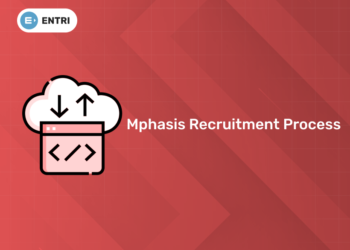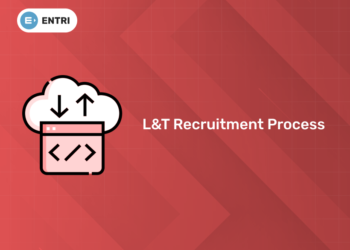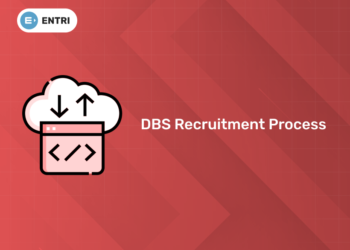Natural language processing (NLP) is the branch of computer science—specifically, the branch of artificial intelligence or AI—concerning giving computers the ability to understand the text and spoken words in the same way that humans do. NLP combines computational linguistics (human language rule-based modeling) with statistical, machine learning, and deep learning models. When these technologies are coupled, computers can interpret human language in the form of text or speech data and ‘understand’ its whole meaning, replete with the purpose and mood of the speaker or writer.NLP powers computer programs that translate text from one language to another, respond to spoken commands, and quickly summarize large amounts of text—even in real-time. You’ve probably encountered NLP in the form of voice-activated GPS systems, digital assistants, speech-to-text dictation software, customer service chatbots, and other consumer conveniences. However, NLP is increasingly being used in enterprise solutions to help streamline business operations, boost employee productivity, and simplify mission-critical business processes.
Learn to code from industry experts! Enroll here
The uncertainties in human language make it extremely difficult to build software that properly identifies the intended meaning of text or speech input. Homonyms, homophones, sarcasm, idioms, metaphors, grammar and usage exceptions, sentence structure variations—these are just a few of the human language irregularities that take humans years to learn, but that programmers must teach natural language-driven applications to recognize and understand accurately from the start if those applications are to be useful. The first NLP applications were hand-coded, rules-based systems that could do certain NLP tasks but couldn’t readily grow to meet an infinite stream of exceptions or rising amounts of text and speech input. Enter statistical natural language processing (NLP), which combines computer algorithms with machine learning and deep learning models to automatically extract, categorize, and label parts of text and speech input before assigning a statistical likelihood to each possible interpretation of those elements. Deep learning models and learning approaches based on convolutional neural networks (CNNs) and recurrent neural networks (RNNs) now allow NLP systems to ‘learn’ as they operate and extract more accurate meaning from massive amounts of raw, unstructured, and unlabeled text and speech data.
Are you aspiring for a booming career in IT? If YES, then dive in |
||
Full Stack Developer Course |
Python Programming Course |
Data Science and Machine Learning Course |
What is Stemming?
The process of developing morphological variations of a root/base word is known as stemming. Stemming programs are sometimes known as stemming algorithms or stemmers. The phrases “chocolates,” “chocolatey,” and “choco” are reduced to the root word, “chocolate,” while “retrieval,” “retrieved,” and “retrieves” are reduced to the stem “retrieve.” Stemming is a crucial step in the natural language processing pipeline. Tokenized words are sent into the stemmer. How are these tokenized words obtained? Tokenization, on the other hand, entails breaking down the document into various terms. Creating a stemming algorithm may be straightforward. Some straightforward algorithms will simply remove identified prefixes and suffixes. These basic methods, however, are prone to inaccuracy. A mistake, for example, might convert phrases like laziness to lazi instead of lazy. Such algorithms may also struggle with phrases whose inflectional forms do not completely replicate the lemma, such as saw and sight. The three main Stemming algorithms are;
- Porter’s Stemmer Algorithm
It was one of the most widely used stemming algorithms when it was first presented in 1980. It is based on the assumption that English suffixes are made up of a mixture of smaller and simpler suffixes. This stemmer is well-known for its quickness and ease of use. Porter Stemmer’s principal uses include data mining and information retrieval. Its uses, however, are confined to English terms. Furthermore, the group of stems is mapped to the same stem, and the output stem is not always a valid word. The algorithms are rather extensive and are thought to be the earliest stemmer.
- Snowball Stemmer
The Snowball Stemmer, like the Porter Stemmer, can map non-English words. Snowball Stemmers is a multi-lingual stemmer since it supports various languages. The Natural Language Toolkit (NLTK) package is also used to import the Snowball stemmers. This stemmer, which is the most extensively used, is based on a computer language called ‘Snowball’ and analyzes tiny strings. The Snowball stemmer, also known as the Porter2 stemmer, is far more aggressive than the Porter stemmer. The Snowball Stemmer has a faster computing speed than the Porter Stemmer due to the advancements made.
- Lancaster Stemmer
When compared to the other two stemmers, the Lancaster stemmers are more active and energetic. The stemmer is far quicker, however, the method is quite perplexing when dealing with short words. However, they are not as effective as Snowball Stemmers. Lancaster stemmers employ an iterative process and save the rules outside.
Learn Coding in your Language! Enroll Here!
What is Lemmatization?
Lemmatization is a text pre-processing approach that is widely utilized in Natural Language Processing (NLP) and machine learning in general. We strive to reduce a given term to its base word in both stemming and lemmatization. The root word is referred to as a stem in the stemming process and a lemma in the lemmatization process. To arrive at the stem of the word, a portion of the word is simply sliced off at the tail end. There are several methods used to determine how many letters must be removed, however, the algorithms do not understand the meaning of the word in the language to which it belongs. The algorithms in lemmatization, on the other hand, have this information. Indeed, one might argue that these algorithms consult a dictionary to determine the meaning of a word before reducing it to its core word, or lemma. As a result, a lemmatization algorithm will recognize that the word better is derived from the word good, and hence the lemme is excellent. The process of gathering together words that have the same root or lemma but have various inflections or derivatives of meaning so they may be evaluated as one item is referred to as lemmatization. The process of lemmatization tries to remove inflectional suffixes and prefixes to reveal the dictionary form of the word. Some key applications of lemmatization are:
- Sentiment Analysis
Sentiment analysis is the study of people’s messages, reviews, or remarks to determine how they feel about something. The text is lemmatized before it is studied.
- BioMedicine
Lemmatization can be used to analyze biological texts morphologically. The Biolemmatizer tool was created specifically for this purpose. It generates lemmas based on a word lexicon. However, if the term is not in the lexicon, it sets rules that convert the word into a lemma.
- Search Engines
Lemmatization is used by search engines such as Google to give better, more relevant results to their consumers. When users submit queries to the search engine, the engine will automatically lemmatize the words in the queries to understand the search term and offer relevant and complete results. Lemmatization even allows search engines to map documents, allowing them to present relevant results and even extend them to include additional information that users may find beneficial.
- Information Retrieval Environments
Lemmatizing is used to map materials to common subjects and to present search results. To do this, it indexes when the number of documents increases significantly.
- Document Clustering
Document clustering (also known as text clustering) is a type of group analysis performed on text texts. Its most important uses are topic extraction and quick information retrieval. Both stemming and lemmatization are used to reduce the number of tokens required to communicate the same information, hence improving the overall technique. Following pre-processing, features are determined by estimating the frequency of each token, and clustering algorithms are employed.
be a data scientist ! join now !
Wrapping Up
Both lemmatization and stemming are substantially more complicated. There are some situations where the cost of lemmatization is completely justified, and in fact, lemmatization is required. Stemming is a speedier procedure than lemmatization since it slices words without understanding their context in the sentences in which they appear. Lemmatization is a dictionary-based technique, whereas stemming is a rule-based one. In addition, stemming has a lesser degree of precision than lemmatization.










